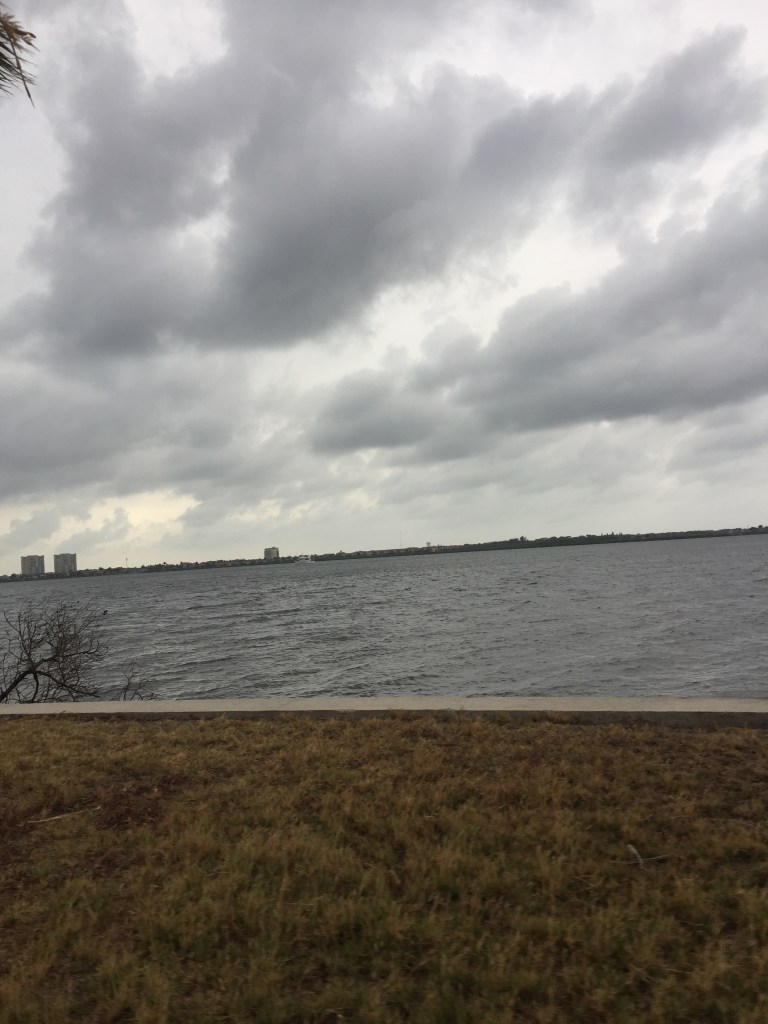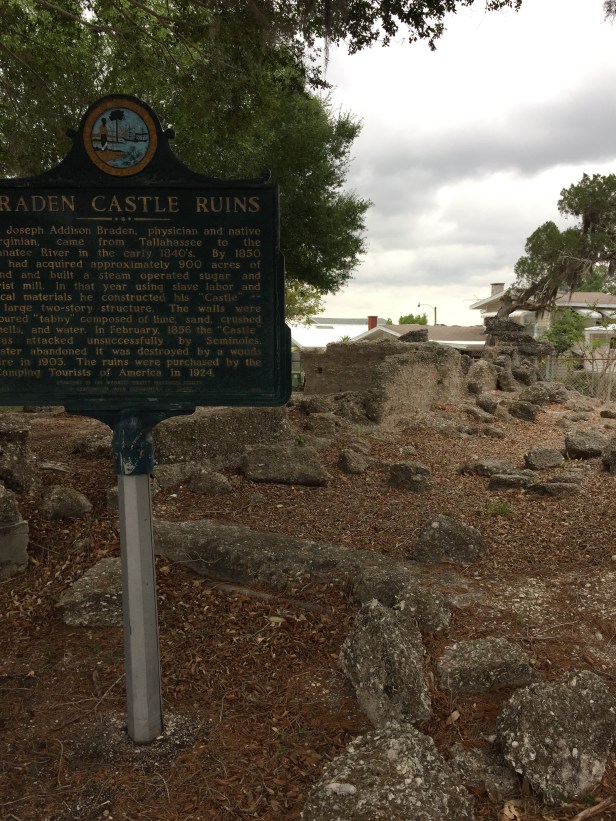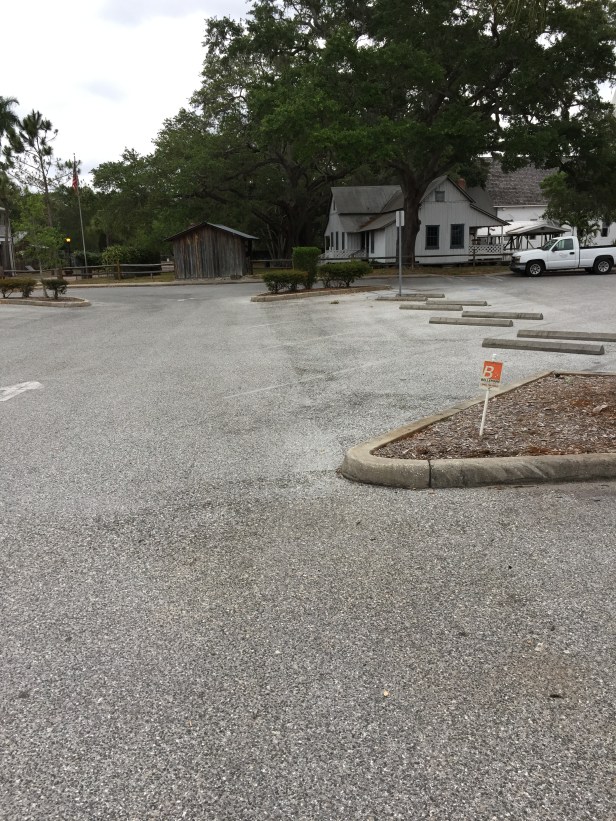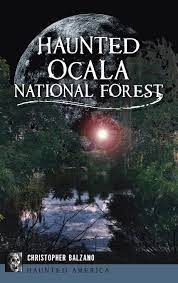There are five reasons why folklore is created and spread.
1. To remember the history of a people.
2. To unify a people and create a sense of community.
3. To teach or warn younger people about the dangers of the world or reinforce what they should do.
4. To scare or entertain.
5. To explain a natural phenomenon.
The infamous story of the Singing Manatee River in Bradenton, Florida, tries to check all of the boxes. The story starts with a simple tale of love but becomes more and more complex the closer you look into it.
Years ago, young daughter of a Calusa chief meets the son of a Timucuan chief and the two quickly fall in love. The only place they can see each other is at the Manatee River in Bradenton, which is considered neutral territory for both tribes. He lives north of the river and she lives south, so they meet in the middle at night to feed the love they know their families will not bless. When he asks for her hand in marriage, she tells him of the mystic spring on her side of the river. Anyone who has tasted from the mystic spring there, and she has often, will never be able to survive without the water of their homeland. They will forever yearn for it and never be quenched until they have it again. Still, she reluctantly agrees to marry him, and at that moment the water comes alive. A low hum turns into a song until the two are surrounded by music seemingly coming from the water itself. The young man almost jumps over the side of their canoe he’s so scared, but she gently holds his arm. She tells him this is the music of her ancestors, heard only during certain times of the year and when their voice is needed. They are blessing their love.
The two decide to move to his side of the river as his father is more accepting. Here is where the legend takes one of several different paths. In the most popular version, they live happily together as Timucua, but she still feels the pull back to her people. Eventually she returns and her father accepts their love and vows the young man will take over as chief when he dies. Already being the chief on his side of the river, it unites them, which helps to explain why the Timucua as a people disappear from history before the coming of the Seminoles. The other variation also has a happy ending, but not before bloodshed. On the Calusa side, her leaving is seen as a kidnapping and a war ensues. Many are killed before a truce is struck and they all drink of the spring and are overcome by the music.
You are meant to be drawn into the story. The young couple who are kept apart in love. The secret meeting. The eventual reconciliation. There might even be something familiar in the singing that keeps bouncing around in your memory like a song that you can’t quite remember the melody to. The story had been told long before Wagner had written about it, and by the time he had formalized the legend it had already been explained. A reporter for the Bradenton Herald named Jack Leffingwell took the tale to task in 1945, concluding the music was “tannic acid washing off the palmetto roots in the rainy season into the river, setting up a chemical reaction with the fuller’s earth on the riverbed.” Julia Martin, a chemist living in the Boston area summarizes it this way, “When the acid/ base reaction happens, it produces gas as a byproduct like carbon dioxide and oxygen. The gas rapidly evolving produces a sound we can hear audibly. Like an Alka Seltzer tablet in water or some acidic beverage. You will hear it fizz at the gas turbulently escapes the liquid solution.” Sounds like a pretty decent explanation for the natural oddity heard by the Calusa, the Timucua, and the Seminoles, who we discovered also reported hearing the odd music and thought it was the spirits of those who had passed.
But there’s one part of the story Leffingwell couldn’t quite explain, which may be the reason he didn’t address it in his article. On some nights, for at least the last two hundred years, people have seen shadowy figures on the water. Sometimes people describe it as a small boat, like a canoe, and other times it said to just be a silhouette beneath the water. The music is not heard anymore, but people still see dancing ghost lights hovering over the water, unable to be explained by planes or the reflections of stars or business lights.
Keywording completely unrelated ideas about the mystery of birds, one of the top hits was a book titled The Singing River Story by Laura Hildick Burge. The writer, who had chosen to center her romance novels on a Pascagoula legend from Mississippi known to her family, was living in Holiday, Florida, the town we had legend tripped the weekend before. Follow the signs.
Their story explains where the music comes from, although sometimes the answer is more confusing than the question. It also points to similar legends all across the country from different tribes. The Biloxi and Pascagoula had a tentative peace between them until the chief of the Pascagoula fell in love with a woman promised to the chief of the Biloxi. This was so offensive that war was declared. The Pascagoula, knowing the Biloxi made slaves of the people they conquered and knowing there was no way they could win a war between the tribes, killed themselves by walking into the water and drowning. As they marched to the water, they all sang a sad song, and the music still heard coming from the water to this day.
The legend itself is told by several different tribes in different locations and is enough of a tradition that there have been multiple studies made of it. That said, some aspects of the legend still seem odd. Why did the chief not just give himself up or deny his love based on what was good for his tribe? The mass suicide of the tribe feels more like a possible explanation as to why it disappeared rather than a rational response to drama with their neighbors.
As we continued our research, we discovered some other odd variations and twists to the story. One of the prime locations to hear the singing was an area known as Rocky Bluff, mentioned in several different versions of the story. The problem is that Rocky Bluff is on the northern side of the river. Why would you be able to hear the singing on the Timucuan side of the water? We were also consumed by the spring and the power it had. Over the years we have seen mineral springs pop up time and again in legends across the state, from stories about the Fountain of Youth to the mysteries of Silver Spring and Tomoka State Park. Where was the spring which sparked this legend?
We were finally able to locate the remains of the mystic spring, and if its water sparked a thousand dreamless nights pulling Calusa home to it, the source is now all but forgotten. We had heard it was now part of the Manatee Historic Park and intended to visit it when we went to trip the story.
Then came the next twist to the story. There had been commentary throughout the journey that the story of the star crossed lovers was too European to make sense in the context of the tribes they were attributed to. Then came a strictly European version of the story said to be passed down by the Egmont Key Lighthouse keeper and constant contributor to local folklore, Captain Charles Moore. Pascual Miquel, also known as The Butcher, took the daughter of a Spanish captain stationed in Pensacola and shipped her off to his secret hiding place at the Manatee River. The young lady, named Carlota or Charlotta, was not a willing girlfriend, but The Butcher was so in love he would do anything to please her. Knowing she was a great lover of music, he strung harp strings from the windows of the cabin where she was being held prisoner. Every time the winds blow, he promised her, you will hear beautiful music. The first time he took off to conduct another pirate adventure, she escaped from the cabin and found herself in the middle of a river she could not swim through. Knowing she might never be rescued, she made her way to the hull of the ship where the munitions were kept. She set them on fire and sunk the ship; her screams being drown out by the sound of the wind going through the harp strings.
Moore explains this is why the music is heard and why the dark figure of a ship is still seen on the water.
There is then another account which sounds more like a UFO sighting than a natural occurrence or a ghost legend. According to a Seminole legend which is said to have been from the Calusa:
“Many years ago a strange craft with huge wings came gliding up the river as if in great fear. Soon others followed in swift pursuit, and the watchers from the shore saw many queer parcels dropped over the side of the leading vessel…Then, from below deck, a maiden whose skin was whiter than the skin of Spaniards, and with golden hair appeared. In her hand she held a strange object from which she drew weird and lovely sounds. As the craft sank, below the surface of the river, she still played as if to warn away all trespassers.”
In this version of the story, it would seem the invaders to the river, who are identified as Spanish, sink a ship and the music is from a blond woman who was inside of it. There is not mention of her being a prisoner or having done damage to the craft herself. It’s difficult to sort through whether these are two legends that have borrowed from each other or two retellings of the same incident. It does seem odd that as the legend is passed, the description of the ship does not just name it that and instead takes on a mythical aspect. By the time it was passed both tribes would well know what a Spanish ship was, so why talk about it with such confusion.
We had very little hopes of hearing any singing as we made our way to Bradenton, but I was intrigued by other aspects of the story, namely the ghostly lights on the water and the phantom boats. I had encountered a similar story in Woburn, Massachusetts, where the lights were said to be the spirits trapped under the water after a battle of the god which made the water even more deadly than the infamous Lake Ronkonkoma in Long Island. I wanted to see the environment first hand to evaluate how it might influence the stories.
Our first disappointment came when we tried to find the mineral springs which had sparked stories for generations. Although all the literature had explained how crucial it had been to the development of the city, there is almost nothing left of the once glorious water source. What remains is housed in a small building at the Manatee Historic Park, which is a perfectly fine preservation of the town, but was closed and unimpressive. Strike one on the legend. The path the spring once took through Bradenton is now developed by road and pavement, but we followed it anyway.
What we found was a historical park containing a history of the town. As it started to rain on us, we traced the story through the markers, eventually coming to one that explained the legend. This was the first time we had seen an actual marker for one of the ghostly stories we were tripping. We could make a straight line between the meager spring, this park, and a main entrance to the banks of the river. The rain was getting harder, so after a few minutes scouting where we would return to, we went to eat at a local German restaurant.
The rain had stopped by the time we were finished. The sky was clear and the sun was going down, making it a perfect scene for trying to hear the music. Although we were able to see across to the other side of the river and traffic was slowing down, we got nothing. No lights or melodies. We crossed the river by car to try and approach the site from the Rocky Bluff side, but found it difficult to actually find where it was. The seedy bar we parked at was where the GPS told us Rocky Bluff was, and we did a video to try and capture the music. One of the men parking cars at the bar told us the site was actually down the street and that the locals considered the area under the bridge Rocky Bluff. We got about half way there before we realized this was the worst idea in the history of our tripping and turned around. One of the issues was the name denoted a raised area that would overlook the water and offer a vantage point with which to see a burning ship in the water. In a later trip with our kids, we discovered a slightly higher area a few hundred feet from where we were, but nothing impressive enough to have changed our perspective.
Then our research found a further description from Joe Warner from his book, The Singing River: A History of the People, Places, and Events along the Manatee River, which is an earlier edition of the PDF we were originally given. He describes Rocky Bluff as being only a few feet higher than the high tide, an odd choice for a lookout. He goes on tell how Carlotta, instead of blowing up the ship, escapes to the bilge while the captain is still on it and drills holes until it sinks. He recounts that a ship later entered that part of the river without hailing and anchored near Rocky Bluff. Later that night an explosion was heard and the bluff, which had been marked with a pirate symbol, had been blown apart and something removed from it, as if they had come back for treasure buried in the rock. Perhaps these two stories combine so that the kidnapped woman blew up the ship in later tellings. However, the sunk ship in the Manatee River is real. In later years, teak wood was recovered and used to build Major Alden J. Adams’ Villa Zanza nearby.
We decided to take one more crack at the Calusa side of the river. We had discovered a poem by Joanna Gerth Lister entitled “Mystic Music of the Manatee” about the legend. Much like we had done with to lure the Ghost Pants in Holiday, Natalie read the poem in an attempt to bring forth something. When she finished we listened intently. She began to see something odd in the water.
Although there were no planes in the area and the lights of local businesses had started to fade, there was a shadow in the water. The water stirred, like there was something disturbing an area of the middle, sending small echo waves through the water on all sides. An eerie, almost grey fog appeared out of nowhere right above where the dark water grew in the river. As we watched, the fog became more of a glowing light, dulled but getting brighter. The shadow was getting bigger as well, like something slowly but deliberately rising to the surface. Then it was gone. The shadow got smaller, the fog dissipated, and we were left with our mouths open at what we had just witnessed.
A short time later we went back with our kids to explore the Manasota Cemetery which is said to be home to a few of its own ghostly legends and try another shot at the Manatee River. The Manatee Historic Park was closed once again, and the kids had a fun day learning cemetery symbols and exploring the parks on the banks of the river, but ultimately we gained no further insight into the truth behind the story.
It comes down to a question of what you are looking for. Folklore exists for those who need it, meaning the story is a reflection of the people who keep it alive. There will never be an answer to the music from the Manatee River or the strange lights that dance there at night. Each culture, paving over the last, with take the parts of the story that have meaning for them and cast off the rest, like we have done since the beginning of storytelling. Natural or supernatural, the origins don’t matter as much as which version appeals to your heart and mind.
You can contact us with questions, comments, and your favorite legend or tidbit of folklore at spookytripping@gmail.com.
Check out Christopher Balzano’s books, including the newly released Haunted Ocala National Forest.
Feel free to call our new phone number during our lives shows to get involved or whenever just to share a legend you’ve heard to ask a question at ((813) 418-6822.
Keep visiting the site for the trip log of our travels and other urban legends at: www.trippingonlegends.wordpress.com
Follow us at: www.facebook.com/trippingonlegends
Twitter: @SpookyBalzano
Instagram: @SpookyTripping















